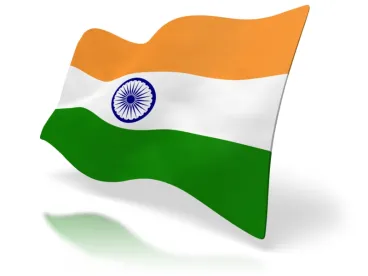On May 13, 2016, the much awaited National Intellectual Property Rights (IPR) Policy was released by the Indian Government. The goal is to create awareness about the importance of IPRs as a marketable financial assets and economic tools. The twenty-eight page policy lays down seven objectives and the necessary steps to be undertaken by the relevant Ministries/departments. A copy of the policy is attached here: National_IPR_Policy_12.05.2016. A brief summary of the objects of the policy are provided below. A more in-depth analysis of each of these objectives will be provided in subsequent BRIC Wall blog posts.
What are the main objectives of the new National IPR Policy?
-
To create public awareness on the economic, social and cultural benefits of IPRs among all sections of society
A nationwide promotion program is proposed for the purpose of improving the awareness about the benefits of IPRs and their value to rights holders and the public, including the less visible IP generators and holders. The goal is the creation of an atmosphere where creativity and innovation are encouraged in private and public sectors, research and development (R&D) centers, industry and academia thus leading to the generation of protectable IP that would ultimately be commercialized. “Creative India; Innovative India” is the proposed slogan for this program.
-
To stimulate the generation of IPRs
There is a need in India to tap the talent pool contained in R&D institutions, enterprises, universities and technical institutes to stimulate the creation of IP assets. The policy proposes a comprehensive IP audit or base line survey across these sectors to allow for the formulation and implementation of targeted programs. Focus will be placed on facilitating researchers and innovators in areas of national priority, and initiating the steps necessary to ensure that the benefits of the IPR regime reach all inventors, especially micro, small and medium enterprises (MSMEs), start-ups and grass root innovators.
-
To have strong and effective IPR laws, which balance the interests of rights owners with larger public interest
While India has an effective and TRIPs compliant IPR regime, it is important for it to protect its rich traditional medicinal knowledge from misappropriation. One suggestion proposed by the policy is to undertake a review of India’s existing intellectual property laws, in consultation with the relevant stakeholders, and update and revise these laws to remove any anomalies and/or inconsistencies, if needed. This suggestion is important as it shows the willingness of the Indian Government to take a fresh look at India’s existing laws and improve upon them for the better.
-
To modernize and strengthen service-oriented IPR administration
The administration of the Copyright Act, 1957 and the Semiconductor Integrated Circuits Layout-Design Act, 2000 will now be brought under the aegis of the ‘Department of Intellectual Policy and Promotion’ (DIPP). Additionally, a cell (namely, a dedicated team/department) for IPR Promotion and Management (CIPAM) is proposed to be created. According to the policy, it is believed that this will facilitate more effective and synergetic working between various IP offices, as well as the promotion, creation and commercialization of IP assets. The policy also envisages promoting awareness about patents to IPR officials at all levels regarding the objects and reasons behind India’s IPR laws and international obligations.
-
Obtaining value for IPRs through commercialization
The policy envisages a concerted effort for capitalizing India’s existing IP assets by creating a public platform to connect creators and innovators to potential users, buyers and funding institutions.
-
To strengthen the enforcement and adjudicatory mechanisms for combating IPR infringements
The policy envisages various measures to strengthen the enforcement of IPRs such as sensitizing inventors and creators of IP on the available measures for protecting and enforcing their rights, a need to build the capacity of enforcement agencies at various levels, the strengthening of IPR cells in State police forces, devising measures to check counterfeiting and piracy, conducting regular IPR workshops, etc. The policy also emphasizes the need to adjudicate IPR disputes through specialized commercial courts and to explore alternate dispute resolution mechanisms.
-
To strengthen and expand human resources, institutions and capacities for teaching, training, research and building skills in IPRs
The policy notes that in order to harness the full potential of IPRs for India’s economic growth, it is essential to develop and increase the pool of IPR professionals and experts in all spheres such as policy and law, strategy development, administration and enforcement. It is believed that developing such a reservoir of experts will facilitate the generation of IP assets in India and their utilization towards commercial development.
Arun Kumar is co-author of this article.




 />i
/>i


